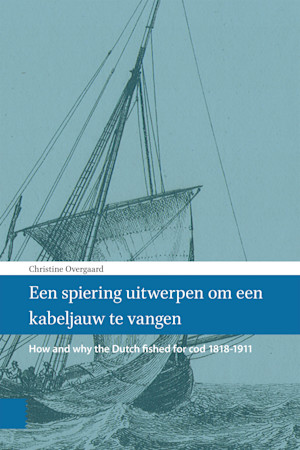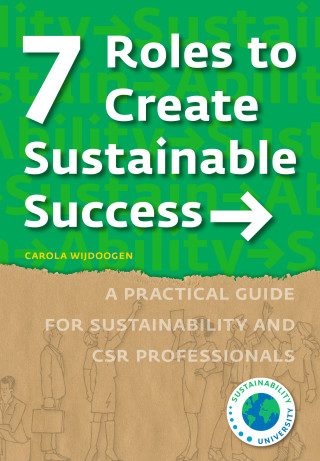
Christine Overgaard
Een spiering uitwerpen om een kabeljauw te vangen
How and why the Dutch fished for cod 1818-1911
Christine Rosenørn Overgaard tells the story in English of how and why the Dutch fished for cod from 1818-1911. Cod fishing was a hook and line fishery. During the 1800s, new vessels and new gear was introduced, especially trawling along the coast in winter in late 1800s. By looking at sources not yet applied in Dutch fishing history she shows how several fishermen fishing for cod ignored these initiatives not because of lack of entrepreneurial spirit, but because of concern for the environment and the cod stock. She examines the business structure in fishing: family business with shared ownership and limited company, including sources showing the importance of social network among ship owners and fishermen. She places cod fishing business within an institutional analysis and development framework, which on the one hand emphasizes the rules the fishermen set for themselves on how, when and where to fish for cod, and on the other hand sees cod fishing as one of several businesses in Dutch (inter)national politics. She illustrates the consequential dilemma facing the ship owners and fishermen when deciding on a profitable or a sustainable business, providing an alternative theory on growth in business, indicating new approaches to current cod fishing.
The Board of Directors and the Scientific Committee of the Flanders Marine Institute (VLIZ) confered the North Sea Award 2014 on Dr. Christine Rosenørn Overgaard for the Scientific contribution: Een spiering uitwerpen om een kabeljauw te vangen. How and why the Dutch fished for cod 1818-1911, Brugge, 2015
The Board of Directors and the Scientific Committee of the Flanders Marine Institute (VLIZ) confered the North Sea Award 2014 on Dr. Christine Rosenørn Overgaard for the Scientific contribution: Een spiering uitwerpen om een kabeljauw te vangen. How and why the Dutch fished for cod 1818-1911, Brugge, 2015
+
Purchase from Taylor & Francis 
Our titles are distributed through Taylor & Francis
Author
- Title
- Een spiering uitwerpen om een kabeljauw te vangen
- Subtitle
- How and why the Dutch fished for cod 1818-1911
- Author
- Christine Overgaard
- Price
- € 54,95 excl. VAT
- ISBN
- 9789085550891
- Format
- Paperback
- Number of pages
- 298
- Language
- English
- Publication date
- 08 - 01 - 2015
- Dimensions
- 15.6 x 23.4 cm
- Categories
- Environmental Humanities
- Food Studies
- Modern History
- Discipline
- History, Art History, and Archaeology
Preface
List of Figures
List of Tables
List of Illustrations
Glossary
Abbreviations
Introduction
Dutch cod fishing prior to 1800
The sources
The biological data
The methodology
Dutch cod fishing in the 1800s
The origin of overfishing?
Regulating and supporting Dutch cod fishing financially
Reactions towards regulations and financial support
Liberalizing Dutch cod fishing
Adjusting to liberalization
Profiting from liberalization
Dutch cod fishing heading for the 1900s
Dutch cod fishermen in the 1800s
Dutch cod fishing and family business
The De Zeeuw family business
The importance of social networking
Skippers' family network
The importance of norms and local identities (and authorities)
Dutch cod fishermen
Dutch cod fishermen heading for the 1900s
Modern theory and old (re)sources?
Dutch cod fishing ahead?
Conclusion
Summary




